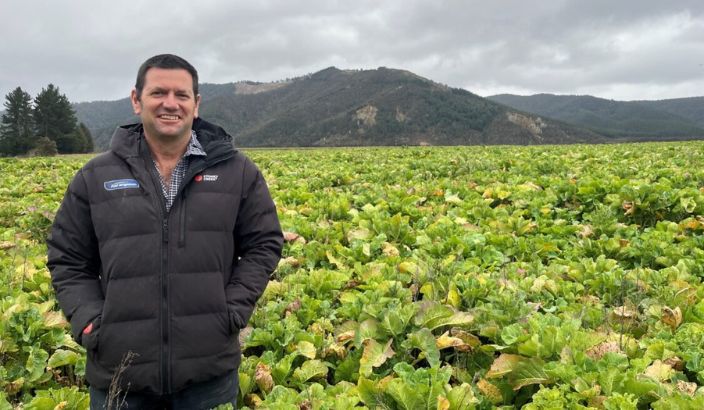Getting Brassicas crops off to a strong start

Andrew Young in St Arnaud, a PGG Wrightson representative working with farmers says the growing concern around drench resistance of worms in sheep has increased the popularity of brassica crops. Photo: Supplied.
Brassicas such as SovGold kale, Massie swede and Mainstar forage rape are widely grown across the upper South Island. Traditionally used for wintering programmes, they are now increasingly popular for lamb production as concerns grow over drench-resistant worms in sheep.
Andrew Young of PGG Wrightson says brassicas are less favourable environments for worms due to sunlight exposure and the worm’s limited movement on stems compared to grass. They also offer higher nutrition for lambs, making them an attractive alternative to traditional grass systems.
Paddock selection: Start by fixing drainage and fertility issues before sowing. “Correcting underlying problems like poor soil or drainage is key to yield,” says Kris Bailey from Agricom. Consider water and supplementary feed access, ease of subdivision, and rotation history.
Crop rotation: Avoid brassicas in the same paddock for 4–5 years to reduce clubroot and other soil-borne diseases. Integrate brassicas into a broader rotation plan to prevent disease build-up.
Seedbed preparation: Brassicas are small-seeded and need fine, firm seedbeds and 10–15mm sowing depth. A double weed spray 4–6 weeks apart is recommended to reduce weed pressure and improve establishment. Choose the right method—cultivation, precision planting, or direct drilling—and seek local advice to match conditions.
Timing of planting: Soil temperatures should be above 12°C. Planting too early lets weeds outgrow the crop; too late and you miss the grazing window. Know your crop’s maturity date and work backwards.
Monitoring: Inspect crops frequently in the first six weeks for pests such as Nysius fly, springtails, white butterflies and diamondback moth. Early intervention is crucial.
Brassicas can deliver significant value but success relies on good planning, timing and paddock choice. Andrew Young advises understanding the role of brassicas in your system before planting and seeking guidance from experienced local experts.
Whether you’re trying brassicas for the first time or refining your system, the key is to get the basics right and ask for advice. Small improvements can make a big difference.

